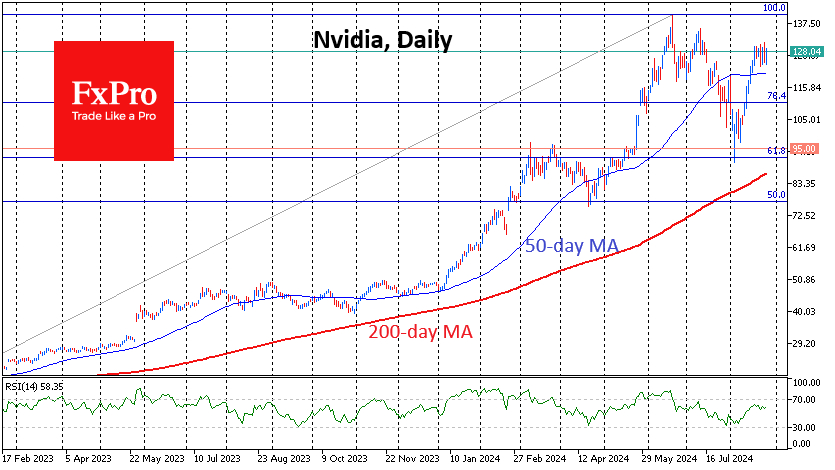Anticipation is mounting as Nvidia prepares to unveil its quarterly report to the financial world. With a staggering market capitalization of almost $3 trillion, the tech giant is projected to exhibit a twofold surge in sales in comparison to the previous year.
Exceeding such lofty expectations is no easy feat. Offering a sanguine revenue outlook for forthcoming quarters and years, while simultaneously avoiding investor disillusionment, poses an even greater challenge.

Nvidia’s sheer size and its ripple effect on other stocks make this forthcoming report, scheduled for release after the closure of the primary US trading session on Wednesday, a highly anticipated affair. While Nvidia has historically delighted and surprised investors, the company may need to pull off another such feat this time around.
The options market is abuzz with discussions surrounding the prevailing expectation of a 10% price fluctuation post-report—a figure that aligns with the upward swings witnessed in the previous two reports in May and February, as well as last August.
Should these predictions materialize, it would propel Nvidia’s share price to record highs surpassing $141 and elevate the market capitalization to almost $3.5 trillion, further solidifying the clash with Apple for the top spot.
Positive tidings could pave the way for major US equity indices to test or breach all-time peaks anew, shrugging off the repercussions of the carry trade unwinding observed in late July and early August.
Conversely, a disappointing report might trigger a wave of sell-offs in AI-related stocks, which have witnessed robust rallies over the past 20 months. This could rekindle apprehensions of a reprise of the dot-com bubble debacle of 2000.
A substantial downturn has the potential to precipitate a deeper correction by confirming the divergence between price and RSI on daily timeframes, with a higher peak in price corresponding to a lower peak in the Relative Strength Index.
In such a scenario, the downside target would be near the $90 mark, dragging the price back to the lows seen earlier this month and in proximity to the 200-day moving average.
Nonetheless, a retreat from its historical highs may not indicate the culmination of Nvidia’s trajectory. In such a case, a falter in early August could herald a customary 61.8% Fibonacci retracement of the global ascent from early 2023 to the peak on June 20.
A breakthrough beyond this threshold would initiate an ‘extension,’ unlocking an upside potential of $220.
